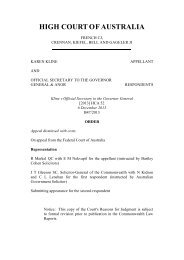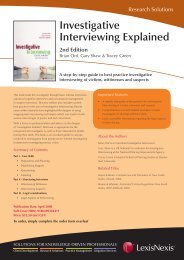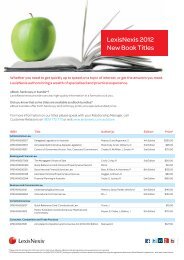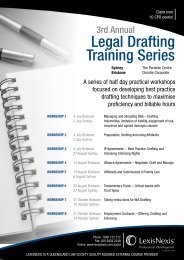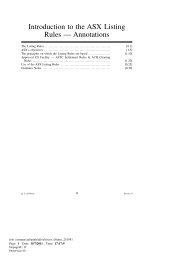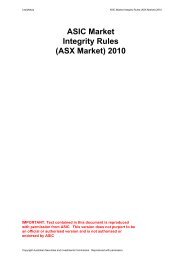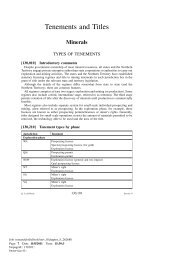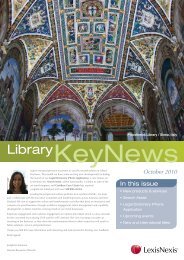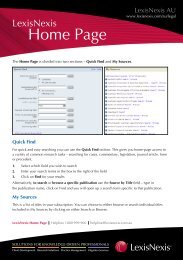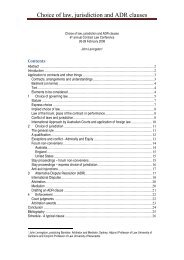Chapter 2 - LexisNexis
Chapter 2 - LexisNexis
Chapter 2 - LexisNexis
Create successful ePaper yourself
Turn your PDF publications into a flip-book with our unique Google optimized e-Paper software.
(Inc) v Rossiter [2009] WASC 229 addressed similar issues when consideringthe legal obligations of a medical service provider with responsibility for thecare of a mentally competent quadriplegic patient who directed the medicalservice provider to discontinue provision of nutrition and general hydration.The court’s reasons were consistent with the principle of patient autonomy orself-determination as to whether or not the patient will continue to receivemedical treatment. See also Australian Captial Territory v JT [2009] ACTSC105 which addressed consent to medical treatment in the context of thepatient’s wishes based on a delusional set of assumptions.• Advanced Arbor Services Pty Limited v Phung [2009] NSWSC 1331 is anunusual case focusing on issues going beyond medical treatement. It isincluded here as it included liability for misrepresentation under the TradePractices Act and the Fair Trading Act (NSW).• Hammond v Heath [2010] WASCA 6 considers the extent of the duty to warn,in particular regarding the removal of materials (in this case, mesh) usedduring the course of surgery.2.6 The court as the ultimate arbiter• The discussion in the text regarding Rogers v Whitaker notes that the standardof care is not to be determined solely, or even primarily, by reference to thepractice followed or supported by a responsible body of opinion in theprofession. Marko v Falk [2008] NSWCA 293 at [76] – [79] briefly addressedthe circumstances in which a court may substitute its own opinion in thefollowing terms: ‘Mr Neil submitted that Rogers v Whitaker supported theproposition that if all members of a particular profession were doingsomething that was not in accordance with what the Court considered to becareful practice, then the Court should say so. That submission was pitched atsuch a high level of generality as to be meaningless. It fails to recognise thecareful distinction all members of the High Court drew in Rogers v Whitakerbetween diagnosis and treatment, and warning of risks. Mr Neil did notsuggest any sensible route by which the Court could impose a view as tocareful practice contrary to the medical opinions called on both parties’behalves. Mr Neil could not refer the Court to any case since (or before)Rogers v Whitaker in which the court had taken the course he propounded in acase which involved clinical judgment in an operational context……In myview this was a case where the plurality view in Rogers v Whitaker as to theoften decisive role professional opinion may play has strong resonance.’<strong>Chapter</strong> 33.9 Duty under statuteReturn to table of contents• In the context of possible claims against medical practitioners under the TradePractices Act 1974 (Cth), see Kowalczuk v Accom Finance [2008] NSWCA343. The court followed Shahid v Australian College of Dermatologists [2008]FCAFC 72; (2008) 168 FCR 46.



